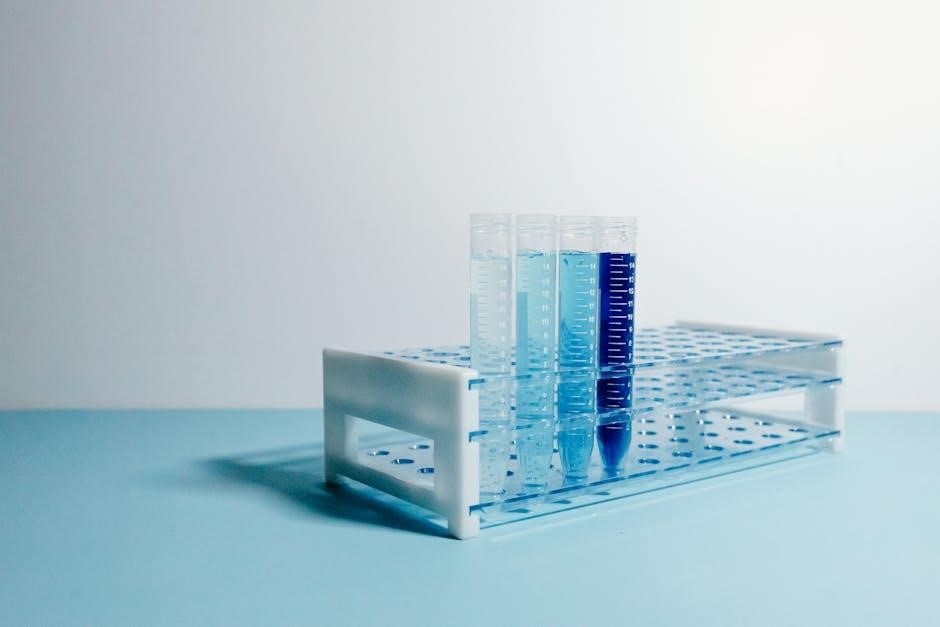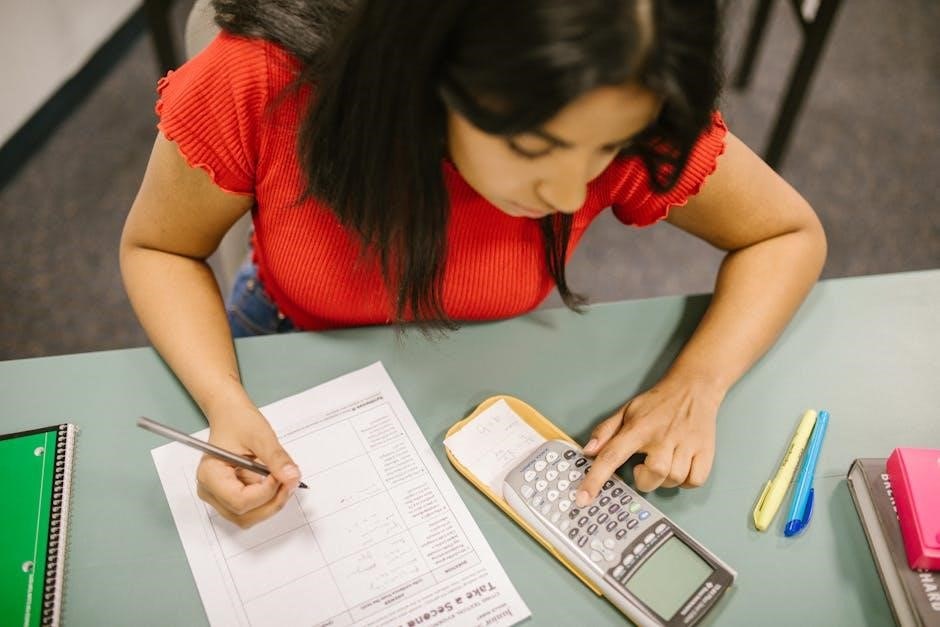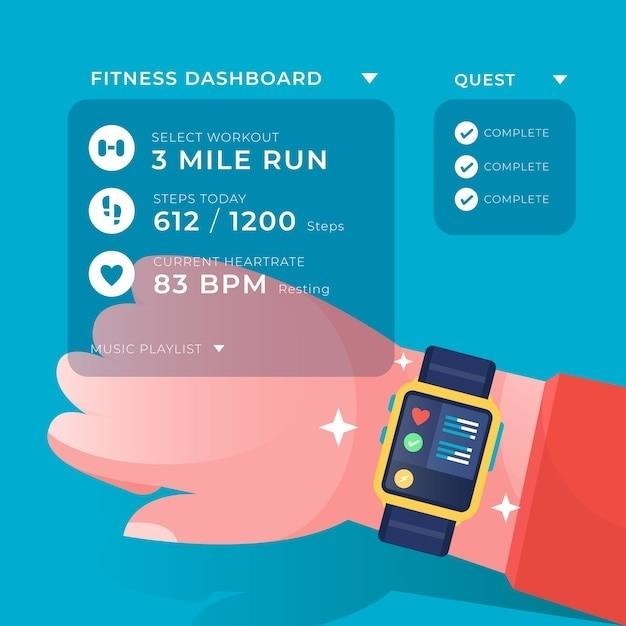
Looking for a comprehensive Year 9 Maths test with answers in PDF format? These resources assess key skills, covering algebra, geometry, and more. Ideal for end-of-year reviews and identifying areas for improvement.
Purpose of Year 9 Maths Tests
Year 9 maths tests serve a crucial purpose in evaluating students’ understanding and mastery of key mathematical concepts acquired throughout the Key Stage 3 curriculum. These assessments are strategically designed to gauge proficiency in areas such as number, algebra, geometry, ratio and proportion, probability, and statistics. By administering these tests, educators can effectively measure students’ ability to apply learned mathematical principles to solve both procedural and applied problems, thereby providing a comprehensive overview of their mathematical capabilities.
Moreover, Year 9 maths tests play a vital role in identifying individual learning gaps and areas where students may require additional support or intervention. The results of these assessments offer valuable insights into students’ strengths and weaknesses, enabling teachers to tailor their instruction to address specific learning needs. This personalized approach to education ensures that each student receives targeted assistance to overcome challenges and achieve their full mathematical potential.
In addition to informing instructional practices, Year 9 maths tests also serve as a valuable tool for tracking student progress over time. By comparing performance on these assessments with previous evaluations, educators can monitor individual growth trajectories and assess the effectiveness of teaching strategies. This data-driven approach allows for continuous improvement in both curriculum design and instructional delivery, ultimately leading to enhanced student outcomes.

Furthermore, Year 9 maths tests contribute to the broader educational goals of preparing students for future academic pursuits. By familiarizing students with standardized testing formats and question types, these assessments help develop essential test-taking skills and reduce anxiety associated with high-stakes examinations. This preparation is particularly important as students transition to Key Stage 4 and begin preparing for GCSE exams, where strong mathematical foundations are essential for success.
Finally, Year 9 maths tests provide students with valuable feedback on their own learning. By reviewing their performance on these assessments, students can identify areas where they excel and areas where they need to focus their efforts. This self-assessment process promotes metacognitive awareness and encourages students to take ownership of their learning, leading to increased motivation and engagement in mathematics.
Key Topics Covered in Year 9 Maths Tests
Year 9 maths tests are designed to assess a broad range of mathematical topics that students are expected to master by the end of Key Stage 3. These topics encompass various domains, ensuring a comprehensive evaluation of students’ mathematical proficiency. A significant portion of the tests focuses on Number, including fractions, decimals, percentages, place value, negative numbers, factors and multiples, rounding, order of operations, and standard form. These questions evaluate the student’s ability to perform calculations, understand number properties, and apply these concepts to problem-solving scenarios.
Algebra is another key area, with questions covering manipulating algebraic expressions, expanding and factorising, solving linear equations, using formulae, sequences, straight-line graphs, and inequalities. These questions assess the ability to work with algebraic symbols, solve equations, and understand graphical representations of algebraic relationships. Students are expected to demonstrate proficiency in simplifying expressions, solving equations, and applying algebraic techniques to real-world problems.
Ratio, proportion, and rates of change are also assessed, including ratio, direct and inverse proportion, and conversion rates. These questions test the understanding of proportional relationships and the ability to solve problems involving ratios and rates. Students are expected to be able to set up and solve proportions, convert between different units, and apply these concepts to practical situations.
Geometry and measures are covered extensively, including area and perimeter, surface area and volume of 3D shapes, angles, parallel lines, properties of polygons, transformations, speed/distance/time, construction and loci, bearings, congruence, and Pythagoras’ theorem. These questions evaluate the knowledge of geometric shapes, their properties, and the ability to calculate measurements. Students are expected to be able to apply geometric principles to solve problems involving shapes, angles, and measurements.
Probability is assessed, including theoretical probability, experimental probability, sample space diagrams, Venn diagrams, and probability of combined events. These questions test the understanding of probability concepts and the ability to calculate probabilities in different scenarios. Students are expected to be able to determine theoretical probabilities, interpret experimental data, and apply probability rules to solve problems.
Finally, Statistics is covered, including data collection, pie charts, scatter diagrams, and averages including from a table. These questions evaluate the ability to collect, organize, and interpret data. Students are expected to be able to create and interpret graphs, calculate averages, and draw conclusions from statistical information.
Types of Questions in Year 9 Maths Tests
Year 9 maths tests incorporate a variety of question types designed to assess different aspects of mathematical understanding and skills. These questions range from straightforward procedural tasks to more complex problem-solving scenarios, requiring students to apply their knowledge in diverse contexts. A significant portion of the tests includes Procedural Questions, which focus on testing the student’s ability to execute specific mathematical techniques and algorithms. These questions often involve calculations, simplifications, or manipulations of mathematical expressions. For example, students may be asked to solve linear equations, expand algebraic expressions, or calculate the area of a geometric shape. These questions assess the student’s mastery of fundamental mathematical skills and their ability to apply them accurately.
In addition to procedural questions, Year 9 maths tests also include Applied Problems, which require students to apply their mathematical knowledge to real-world scenarios; These problems often involve multiple steps and require students to interpret the context, identify relevant information, and choose appropriate mathematical techniques to solve the problem. For example, students may be asked to calculate the percentage increase in a given quantity, determine the distance traveled at a certain speed, or solve a problem involving ratios and proportions. These questions assess the student’s ability to translate real-world situations into mathematical models and use their mathematical skills to find solutions;
Reasoning Questions are also included to assess the student’s ability to think logically and justify their answers. These questions often require students to explain their reasoning, provide evidence to support their claims, or make connections between different mathematical concepts. For example, students may be asked to explain why a certain mathematical rule works, justify their choice of a particular solution method, or compare and contrast different mathematical approaches. These questions assess the student’s ability to think critically and communicate their mathematical understanding effectively.
Some tests may also include Multi-Step Applied Questions, which combine elements of both applied problems and reasoning questions. These questions require students to solve complex problems that involve multiple steps and require them to explain their reasoning at each step. These questions assess the student’s ability to integrate their mathematical knowledge and skills to solve challenging problems.
Finally, Show That Questions are often included, requiring students to demonstrate a particular mathematical result or property. These questions assess the student’s ability to construct logical arguments and prove mathematical statements. By incorporating these diverse question types, Year 9 maths tests provide a comprehensive assessment of students’ mathematical abilities.
Benefits of Using Year 9 Maths Tests
Utilizing Year 9 maths tests offers a multitude of benefits for students, teachers, and the overall educational process. These assessments serve as valuable tools for Identifying Knowledge Gaps, allowing educators to pinpoint specific areas where students may be struggling. By analyzing the results of these tests, teachers can gain insights into individual student weaknesses and tailor their instruction to address these gaps effectively. This targeted approach ensures that students receive the support they need to master essential mathematical concepts.
Year 9 maths tests also play a crucial role in Measuring Student Progress throughout the academic year. By administering these tests at regular intervals, teachers can track student growth and identify areas where students have made significant improvements. This data provides valuable feedback on the effectiveness of teaching strategies and allows teachers to adjust their methods to optimize student learning. Furthermore, these tests can help students themselves recognize their own progress and stay motivated to continue learning.
These tests also help in Preparing for Future Studies. Year 9 is a pivotal year in mathematics education, as it lays the foundation for more advanced topics in Key Stage 4 and GCSEs. By exposing students to challenging test questions, teachers can help them develop the problem-solving skills and critical thinking abilities necessary for success in higher-level maths courses. The tests also familiarize students with the format and style of questions they will encounter in future exams, reducing anxiety and improving their performance.
Year 9 maths tests also facilitate Effective Revision. The tests highlight the key areas that students need to focus on during their revision, ensuring that they allocate their time and effort efficiently. By working through practice test questions, students can reinforce their understanding of core concepts and improve their ability to apply these concepts in different contexts. This targeted revision approach can significantly enhance student performance on exams.
These tests also provide Valuable Feedback. The tests provide valuable feedback to both students and teachers. Students receive insights into their strengths and weaknesses, while teachers gain information about the effectiveness of their teaching. This feedback loop allows for continuous improvement in both teaching and learning, leading to better outcomes for all students.
How to Use Year 9 Maths Tests Effectively

To maximize the benefits of Year 9 maths tests, it’s essential to implement strategic approaches. First and foremost, integrate tests into the curriculum. Don’t treat them as isolated events; instead, weave them into your teaching plan. Use tests as checkpoints after covering specific topics or at the end of a unit. This helps students consolidate their learning and provides you with ongoing feedback on their understanding. Regular testing also reduces test anxiety, as students become more familiar with the format and process.
Next, create a conducive testing environment. Ensure that the testing space is quiet, well-lit, and free from distractions. Provide students with all necessary materials, such as pens, rulers, and calculators (if permitted). Clearly explain the test instructions and time limits. Encourage students to read each question carefully and to show their working. A supportive and organized testing environment can significantly improve student performance.
Also, emphasize test preparation. Before administering a test, provide students with ample opportunities to review the material. Offer practice questions, revision guides, and online resources; Encourage students to work together and to seek help when they are struggling. Teach them effective test-taking strategies, such as time management and how to approach different types of questions. Well-prepared students are more confident and perform better on tests.
Then, provide constructive feedback. After the test, take the time to review the results with students. Highlight their strengths and areas for improvement. Offer specific feedback on their answers, explaining where they went wrong and how they can correct their mistakes. Encourage students to ask questions and to learn from their errors. Constructive feedback is essential for student growth and motivation.
Finally, use test results to inform teaching. Don’t just file away the test results; use them to guide your future instruction. Analyze the results to identify areas where students are consistently struggling. Adjust your teaching methods to address these weaknesses. Provide additional support and resources to students who need it. By using test results to inform your teaching, you can ensure that all students have the opportunity to succeed.
Resources for Year 9 Maths Test Preparation
Effective preparation for Year 9 maths tests requires a combination of resources to cater to different learning styles and needs. A foundational resource is a comprehensive textbook, which provides a structured overview of the curriculum and detailed explanations of key concepts. Ensure the textbook aligns with the specific syllabus followed by the school. Supplement the textbook with revision guides, which offer concise summaries of topics and practice questions. These guides are particularly useful for quick review and consolidation of knowledge.
Online platforms are invaluable for interactive learning and practice. Websites like Third Space Learning, MyMaths, and Mathswatch offer a wealth of resources, including video tutorials, interactive exercises, and practice tests. These platforms often provide personalized feedback and track student progress, allowing for targeted intervention. Encourage students to utilize these resources to reinforce their understanding and identify areas where they need additional support.
Past papers are essential for familiarizing students with the test format, question types, and difficulty level. Access past papers from the school or online repositories. Encourage students to work through these papers under timed conditions to simulate the actual test environment. Review the answers and mark schemes to identify common errors and areas for improvement. Past papers provide valuable insights into the expectations of the examiners.
Worksheets offer focused practice on specific topics. Create or source worksheets that target areas where students are struggling. Ensure the worksheets include a variety of question types, from basic procedural questions to more challenging problem-solving tasks. Provide answers and worked solutions to allow students to check their understanding and learn from their mistakes.
Tutoring can provide personalized support and guidance. Consider hiring a private tutor or enrolling in a tutoring program. A tutor can assess a student’s strengths and weaknesses, provide targeted instruction, and offer encouragement and motivation. Online tutoring platforms offer convenient and affordable access to qualified tutors.
Collaborative learning can enhance understanding and motivation. Encourage students to study together, discuss concepts, and work through practice questions. Peer teaching can be a powerful tool for reinforcing learning and identifying gaps in knowledge. Create study groups or online forums where students can interact and support each other.
Example Questions and Answer Structure

To effectively prepare for a Year 9 Maths test, understanding the types of questions and how to structure answers is crucial. Here are examples covering key topics, along with guidance on approaching them:
Algebra:
Question: Solve the equation 3x + 5 = 14.
Answer Structure:
- Subtract 5 from both sides: 3x = 9
- Divide both sides by 3: x = 3
- Final Answer: x = 3
Explanation: Show each step clearly. Marks are often awarded for the correct method, not just the final answer.
Geometry:
Question: Calculate the area of a triangle with a base of 8cm and a height of 6cm.
Answer Structure:
- Formula: Area = 0.5 * base * height
- Substitution: Area = 0.5 * 8cm * 6cm
- Calculation: Area = 24cm²
- Final Answer: 24 cm²
Explanation: State the formula used, show the substitution, and include units in the final answer.
Number:
Question: Express 0.35 as a fraction in its simplest form.
Answer Structure:
- Convert decimal to fraction: 0.35 = 35/100
- Simplify the fraction: 35/100 = 7/20
- Final Answer: 7/20

Explanation: Show the conversion and simplification steps to ensure full marks.
Ratio and Proportion:
Question: Divide £60 in the ratio 2:3.
Answer Structure:
- Total parts: 2 + 3 = 5
- Value of one part: £60 / 5 = £12
- First part: 2 * £12 = £24
- Second part: 3 * £12 = £36
- Final Answer: £24 : £36
Explanation: Clearly show how the total amount is divided according to the ratio.
Data Handling:
Question: Find the median of the following numbers: 4, 7, 2, 9, 5.
Answer Structure:
- Order the numbers: 2, 4, 5, 7, 9
- Identify the middle number: 5
- Final Answer: 5
Explanation: Ordering the data is crucial for finding the median correctly.
These examples demonstrate the importance of showing your working, stating formulas, and including units. Practice a variety of questions, focusing on clear and structured answers to maximize your score.




No comment yet, add your voice below!